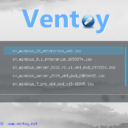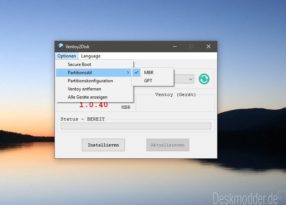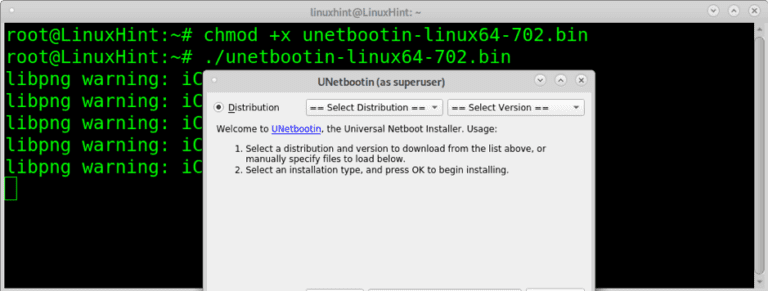

- #Ventoy linux download how to
- #Ventoy linux download install
- #Ventoy linux download archive
- #Ventoy linux download full
- #Ventoy linux download windows 10
I guess your USB drive is now mounted and we can now install Ventoy to create multiboot USB on Linux.

#Ventoy linux download how to
If you don’t know how to mount your USB drive to the Linux filesystem, read our dedicated article here to mount/unmount USB on Ubuntu and other Linux distro using both graphical and command-line method.
#Ventoy linux download archive
You can do the same either by double-clicking on the archive or running the command: Then, extract the Ventoy files from the downloaded tar archive. Download Ventoy Appįirst, download the latest binary files of Ventoy from here. Moreover, you can also check out our article on how to enable or disable secure boot on windows pc here! How To Install Multiple Linux Distros Using Single Bootable USB Stick? 1. You can also follow the method below on any of your desired Linux host systems. But before that, I want to clarify that here I’m using the Ubuntu 20.04 Linux system to put multiple Linux distros ISO files on a single bootable USB Stick. Now let’s move on to the implementation part of creating multiboot USB.
#Ventoy linux download full
You can find a full list of compatible ISOs here. As of now, Ventoy has successfully tested over more than 260 ISO files of the operating system. Since then, it has continued to add new ISO support every week. The first version of Ventoy 1.0.00 was released on 05 April 2020.

Rm: cannot remove './tmp_mnt': Device or resource busy Umount: /home/linux/Downloads/ventoy-1.0.17-linux/ventoy-1.0.17/tmp_mnt: target is busy. In addition, you need a Windows or Linux PC to prepare the USB drive.Ĭreate partitions on /dev/sdb by parted in MBR style. To use both images, you need at least an 8GB drive, and so on.
#Ventoy linux download windows 10
The Windows 10 version 2004 ISO image is 4.9GB. If you are going to use just that image, you need at least a 2GB drive. For instance, the Linux Kamarada 15.1 ISO image is 1.5GB. To use Ventoy, you need a USB drive (be it a USB stick, an external hard drive, a memory card, etc.) that is large enough to hold the ISO images you are going to use. For future reference, to write this text I use this version. The latest release (1.0.17) is just 4 days old, from July 25th. The first release of Ventoy (1.0.0) was made available on April 5th. Ventoy was very useful for me last week, when I installed Windows and Linux on my new SSD Kingston A400, which I received from warranty after the previous one suffered from the SATAFIRM S11 bug. I have been using it to test Linux Kamarada 15.2 Beta. I myself started using Ventoy on the recommendation of a friend. You can find Ventoy very handy if you work on formatting and repairing computers, or if you like to try out different Linux distros. You can also copy other files to drive, so you can continue to use it for other purposes. With Ventoy, you don’t need to format the drive again and again: you can copy and delete ISO images as you wish. Besides that, tools usually prevent the drive from being used for other purposes (it’s not possible to copy other files). That way, you need to reformat the drive every time you want to boot another ISO image.

Ventoy supports legacy BIOS and UEFI (with and without secure boot), MBR and GPT partition tables, which makes it kind of universal.Ĭommonly, tools to create bootable USB drives extract the ISO image contents to the drive, allowing just one ISO image to be used at a time.


 0 kommentar(er)
0 kommentar(er)
